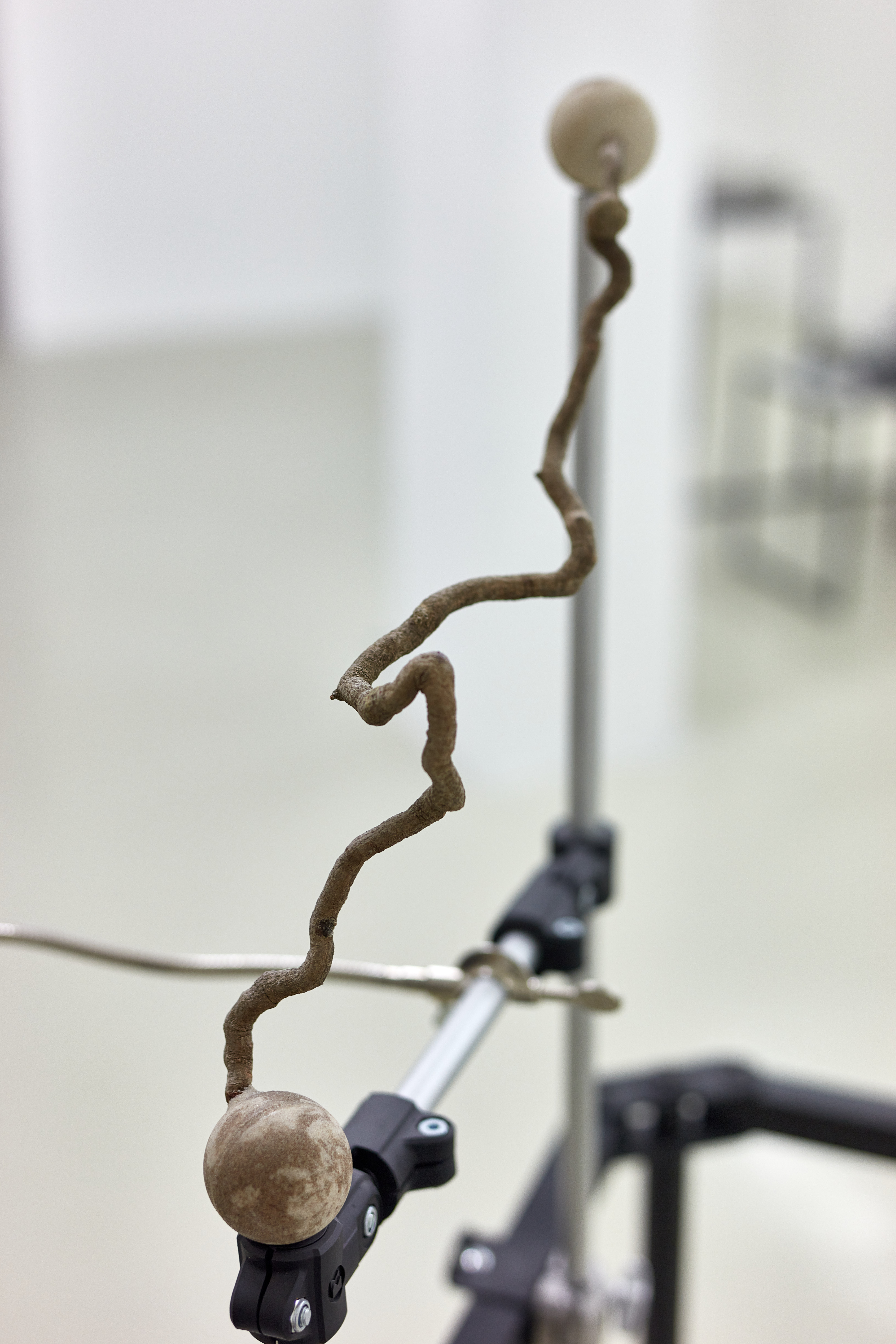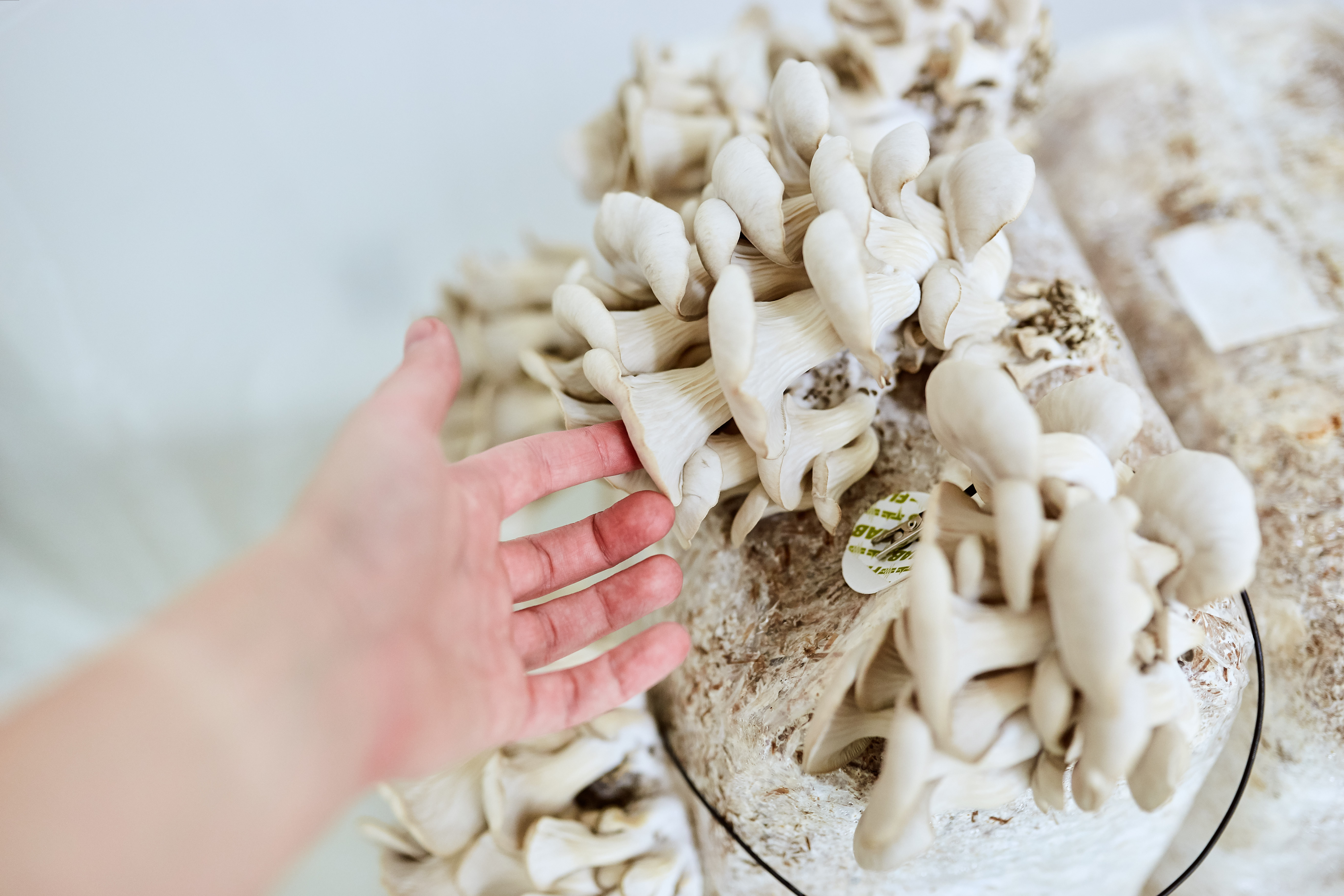Subnature
The Visible Manifestations of Invisible Forces, 2020 mixed media installation
Biofeedback Signaling System and Generative Sound
For Anca Benera & Arnold Estefán
Trafó Gallery, Budapest, HU
2021.10.22. - 12.5.
The research-based art practice of Anca Benera and Arnold Estefán focuses on the invisible and hidden patterns behind historical, social, or geopolitical narratives. Their solo exhibition at Trafó Gallery sheds a light on the unwanted byproducts and imprints of mining, urbanization, industrialization, wars and other human interventions in nature; on the despised elements of nature (that the architectural historian and designer David Gissen refers to as subnature), on the concealed traces of violent and exploitative acts, on the sediments of military and political intervention and on the all-encompassing yet invisible layer of debris.
The artists apply a variety of technologies and perspectives, from microscopic images to satellite imagery, from biosensors to sound navigation-based distance measuring in order to explore the processes that use nature to mask or eliminate undesirable events or that shape the landscape due to political or military purposes. Thus in the exhibition, the sounds of underwater diamond mining and its invisible effects on areas under the ocean are amplified; fungal communication growing on the ruins of destroyed areas is given voice; and processes that seek to obscure the troubled history as well as the present intentions guided by various military, political, and economic interests become visible.
Supported by the Romanian Cultural Institute in Budapest, National Cultural Fund, Pilze-Nagy Kft., Káli Kövek




The Visible Manifestations of Invisible Forces, 2020 mixed media installation: single-channel video, drum rack stand, metal
Joint, aluminium pipe, wood, sand, resin, pigment, the mycelium of various fungi, macronutrients (N, P, K, Ca), hay, plastic, glass, laboratory clamp, microelectronics and custom software; variable dimensions.
Apparently, a mushroom (matsutake) was the first thing to grow in the devastated area after the atomic bomb fell on Hiroshima. This installation builds on the example of the mushroom by focusing on the capacity of nature for resilience and its symbiotically co-existing entities. What makes life still possible on the “ruins” of the present? What are the conditions of liveability, and what manages to live in the ruins we have made? What potentials are re- leased when man and nature meet and ally?
In light of the rising ecological struggles, many parts of the world become unsustainable as liveable spaces. But my- celial bodies—always linked through intense proximities that blur the line between singular and plural—are produc- ing nutrients that allow plants to grow, and plants are pro- ducing nutrients that allow animals to grow. At the heart of the artists’ inquiry are questions about the reimagina- tion of human and more-than-human forms of living, that flourish from the ruins of the modern idea of progress.
Since 2017, Anca Benera and Arnold Estefán have been producing a series of works entitled Debrisphere. Land- scape as an extension of the military imagination, in which they take up the question as to how political and military actions are deposited in landscapes: artificial mountains, military coral reefs, blooming deserts, and other similar man-made constructions resulting from or still serving conflicts and war around the world. In this research, they often shift from macro to micro perspectives, including also invisible particles of war debris, such as the leftovers of bombs and metallic remains from the Normandy land- ings in 1944 that are now inscribed into the sand. In the video-piece of the installation Benera and Estefán are con- ducting an experiment that amalgamates contaminated sand particles (microscopic war debris) from Normandy with a particular fungal organism, in a quasi-lab setting.
Based on audible biofeedback from the onsite growing fungi, Esteban de la Torre / EJTECH creates a techno-organic sound system for the observance of the Other as an au- dible ecology of layered, textural sounds: a murmur inter- rupting the silence; zigzag voices blurring or engaging in conversation with the public.
https://trafo.hu/en/trafo_gallery/beneraestefan
Review /
- kubaparis.com
- blokmagazine.com


